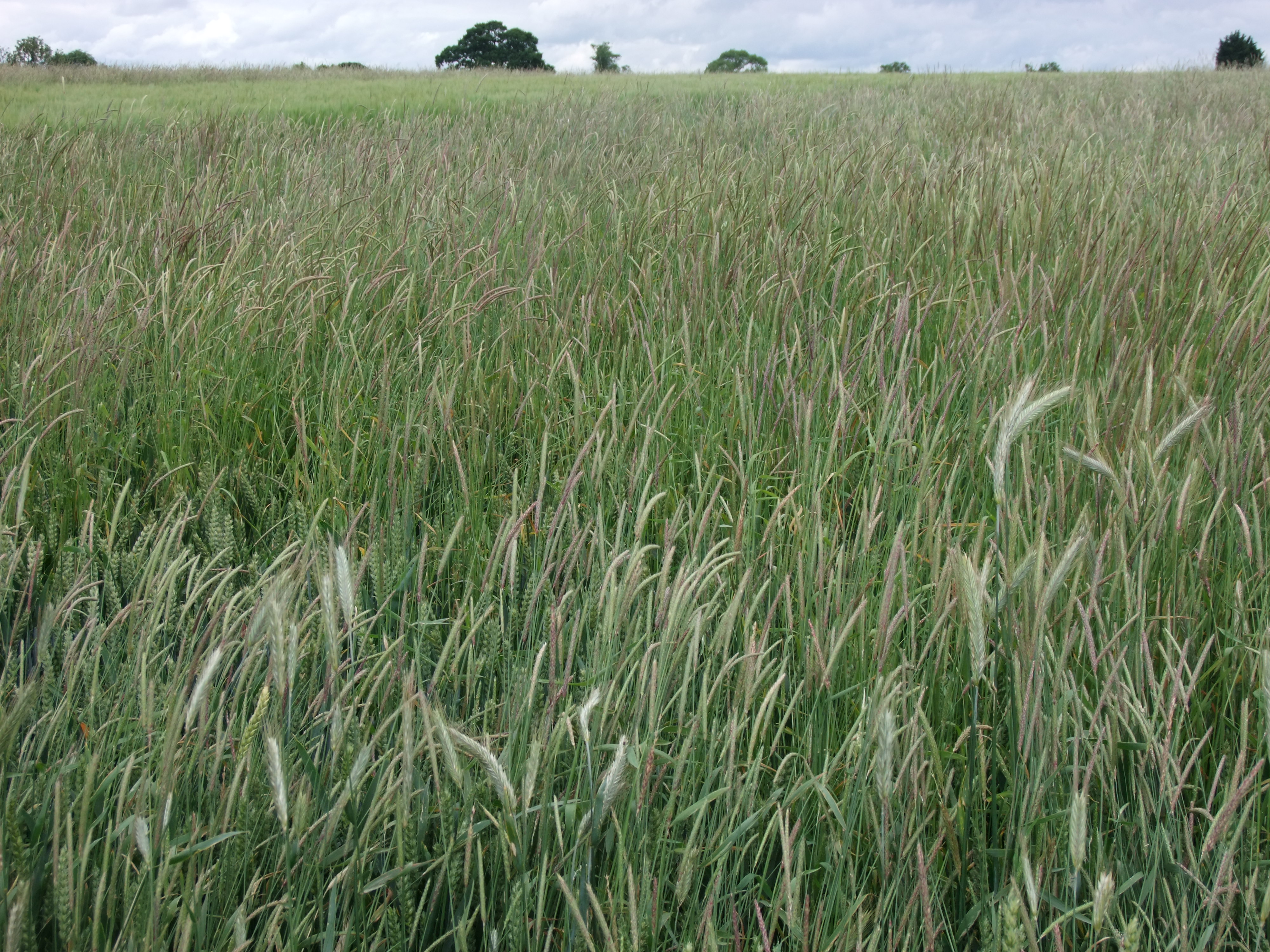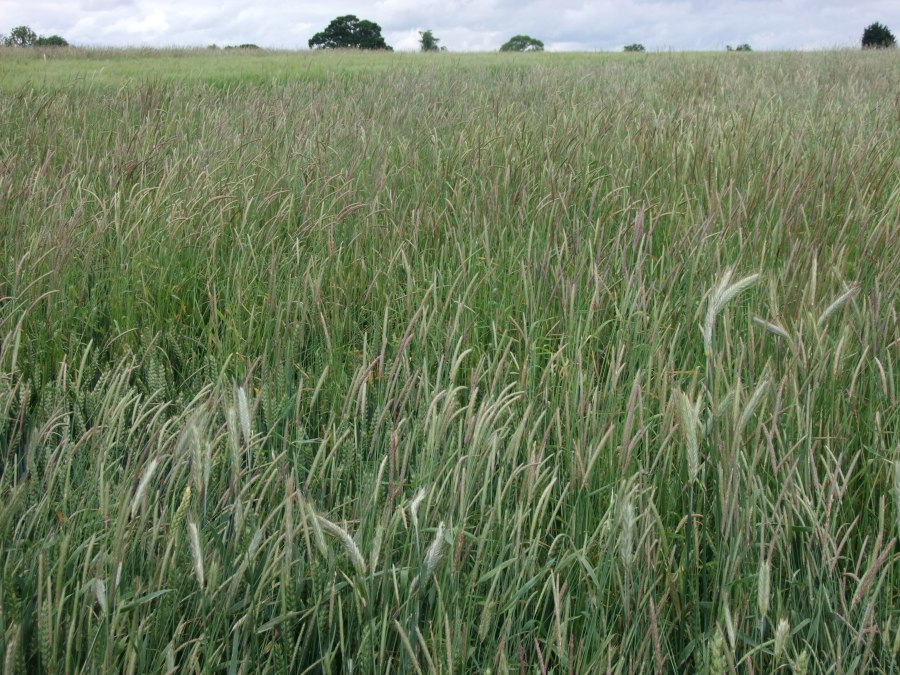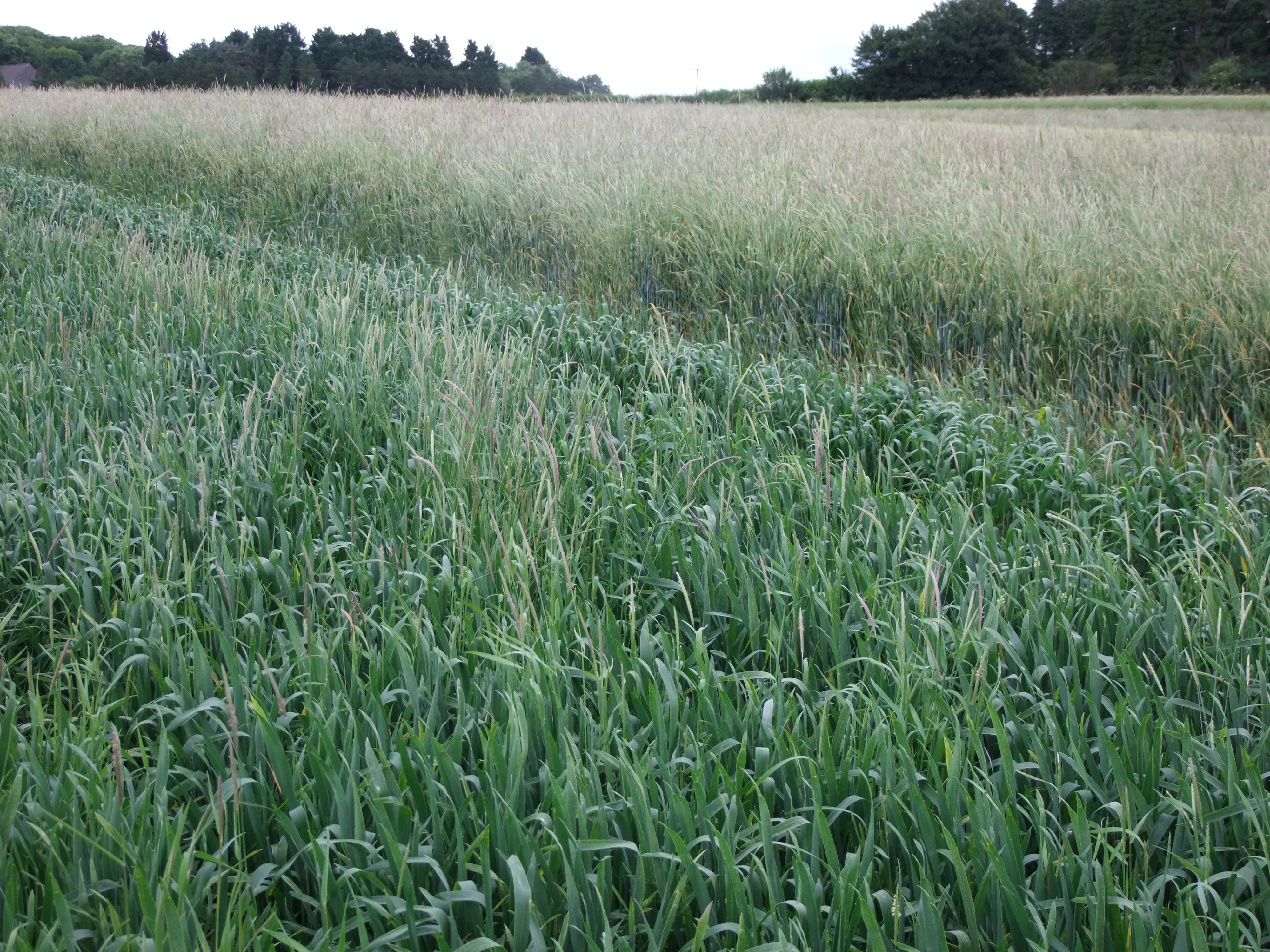Managing blackgrass has dominated open days this summer, while the full extent of what’s been a tricky season for disease has been on show. CPM rounds up some of the advice on offer.
It’s a very long job of ‘doing the right thing’ and you can’t just go back to old practice.
By Tom Allen-Stevens and Lucy de la Pasture
By all accounts, it’s been a dreadful year for blackgrass control, which has been woeful in some fields. No surprise that blackgrass has been the major focus of Open Days around the country this summer as agronomy companies explore the options.
Although there are individual nuances to their approaches, the message that’s being given loud and clear is that controlling blackgrass is about managing the seed-bank and for that purpose, a combination of cultural measures are king.
What’s more, growers attempting to control blackgrass must adopt cultural measures long term. Blackgrass isn’t something that’ll just disappear after a couple of years of change in approach, says Mark Hemmant, Agrovista technical manager.

Mark Hemmant isn’t aiming for suppression of the blackgrass, but an open cover crop that isn’t overly competitive.
Project Lamport
At the Project Lamport trials site in Northants, now in its third years of trials, Agrovista is demonstrating different spring cropping, rotations and establishment techniques, including the use of cover crops as an aid to blackgrass control.
“It’s an important distinction that we’re not advocating cover crops as a means of blackgrass control. We’re using them as a way of encouraging blackgrass to germinate in the autumn, depleting the seed-bank, so it can then be sprayed off before spring cropping,” he says.
With that in mind, selecting the right cover crop is an important part of the strategy. “it’s not suppression of the blackgrass we’re aiming for with the cover crop, but an open crop that isn’t overly competitive,” he explains.
“We’ve found that black oats provide optimum biomass, both above and below ground, when combined with a legume – either vetch or berseem clover. The advantage of berseem clover in a blackgrass situation is that it’s very erect in growth habit, so doesn’t compete with the blackgrass but still benefits the soil.”
But not all varieties of black oats (Avena strigosa) or berseem clover are the same, he warns. “Some varieties of black oats can produce a seed head after drilling in the autumn so it’s important to make sure the variety you’re using is late-heading, for example Panache. This also has a lower C:N ratio, so breaks down faster, improving mineralisation.
“The variety of berseem clover needs to be a single cut variety, such as Tabor, rather than a variety intended for multiple cuts, which will regrow after a frost,” he says.
Cover crop
When it comes to establishing the cover crop, it’s important to treat it as a crop in its own right, Mark Hemmant advises. “One of the things we’ve found is that it’s important to drill the spring crop in the same direction as the cover crop, in parallel, so that soil disturbance is minimised – one of the most important factors when growing a spring crop in a blackgrass situation.”
And with that in mind, Project Lamport is investigating eight different drills this year to discover which works best on the heavy clay soil – a soil type where spring cropping would make many growers throw their hands up in horror and the mention of direct drilling may cause apoplexy. But both techniques are helping achieve great results, according to Mark Hemmant.

The blackgrass had been reduced to low enough levels in the first wheat for a successful crop, but the second wheat was stuffed with blackgrass.
The seed-bank at Project Lamport is stuffed to the brim with blackgrass seeds, as evidenced by a plot which has been left to self-seed since the site was taken under Agrovista’s wing, and looks like a grassy field.
“The background population of blackgrass here is more than 2000 plants/m² and a full herbicide stack gives us about 50% control,” explains Mark Hemmant. “We set up the project to find for those of our customers who are facing similar problems a way to keep farming over and above the usual cultural advice of later drilling and increased seed rate. For growers on soils as heavy as this, drilling after mid-Oct simply isn’t normally an option.”
Apart from all the structural benefits the cover crop brings, one of the factors that makes spring cropping possible on heavy soils is that it helps make the soil drier in the spring.
“When we first started using cover cropping, we were advocating destroying the cover crop in the spring. Our advice is now evolving and we believe a better time to destroy the cover is in the Nov-Jan window,” he says.
The benefits are two-fold, reckons Mark Hemmant. Firstly, the cover crop has a chance to release nutrients in time for the cash crop, rather than tying them up just when it needs them. Secondly the soil is drier in the spring and without surface trash to hinder direct drilling. In 2015, there was a 0.5t/ha yield advantage to this approach of earlier destruction, he says.
Remarkable Success
Another departure from convention at the Agrovista trial site is a remarkable success using spring wheat, where spring barley is the norm in blackgrass situations because it’s usually more competitive. What’s even more impressive is a plot of spring wheat following a cover crop which has been grown without any blackgrass or broadleaf weed herbicides.
Remarkably, there’s very little blackgrass in evidence in this plot, which proves the point that with attention to detail and a sustained cultural approach, the answer to the blackgrass problem doesn’t lie in a can, says Mark Hemmant.
Part of the secret to success with spring wheat is getting the seed rate right, he believes. “We’re looking at seed rates of between 500 to 600 plants/m² to make sure we’re getting a competitive crop. It’s important to get the spring wheat up and away quickly so we’re also applying 90kgN/ha to the seedbed, down the spout at planting.”
One of the more telling plots at Project Lamport is where an autumn wheat crop has followed two fallows to get on top of the blackgrass and then a preceeding bumper first wheat, which yielded at 13t/ha.
Even though the blackgrass had been reduced to low enough levels in the first wheat for a successful crop, the second wheat is a completely different story and stuffed with blackgrass. “The moral of the story is that it’s a very long job of ‘doing the right thing’ and you can’t just go back to old practice once blackgrass becomes a problem,” explains Mark Hemmant. “Just when you think you’re on top of it, it can soon become a problem all over again.”
Give variety decisions some considered Reflection
Growers have been urged to delay variety decisions and not turn their back on those that have shown a weakness this year to yellow rust. The positive attributes of varieties such as Reflection could be unfairly eclipsed if growers focus on just one disease score, points out Barry Barker of Agrii.
“We believe the yellow rust score for Reflection has effectively dropped considerably, which means a rust-active seed dressing is well advised and there won’t be a lot of margin for error in spray timings. But there needs to be a sense of perspective here.
“The variety has a very high yield potential, early maturity and a reasonable septoria score. It’s also stiff strawed, while there are a number of other varieties on the AHDB Cereals and Oilseeds Recommended List with weakish straw, and that concerns us. Spurning Reflection in favour of one of those could be a knee-jerk reaction growers will later regret.”
Yellow rust is an issue that can be managed with current chemistry, he notes, and in many parts of the country, crops remain unaffected by the disease. “It’s about having a balanced wheat portfolio,” he explains.
“There are five varieties with good overall disease scores that have held up well: Skyfall, KWS Siskin, Costello, Graham and Revelation. If you had a particular problem with yellow rust this year, it may be wise to choose varieties that showed greater resistance, and if you struggle to target spray timings, then don’t grow large areas of high-risk wheat varieties. But if yellow rust wasn’t a problem for you this year, Reflection has some good characteristics that you shouldn’t write off.”
Independent disease consultant Rosemary Bayles believes the yellow rust pathotype responsible has been developing for a couple of years but spread very rapidly this season. “Where the disease got in early, Reflection has really suffered – that’s what growers had to plan around.”
The variety’s a Denman/Oakley cross, and has been protected from yellow rust in the past thanks to adult plant resistance, inherited from Claire through Denman, she reckons. “What’s happened this year is probably a further adaptation to that resistance in Claire, and it’ll affect related lines. It’s a strong signal that you shouldn’t have too large an area of those related varieties in your wheat portfolio.”
Sam Brooke of Syngenta points out few growers would ever have picked Reflection on the strength of its yellow rust rating. “It’s the combination of out-and-out yield, stiff straw, early maturity and good specific weight that make Reflection stand out – no other variety has that combination of attributes.”
Syngenta’s new Group 4 variety Graham is selling well and is expected to sell out this year on the strength of its high yield potential and good agronomics, she reports. “But I’d advise against making snap decisions on varieties this summer – many Reflection growers who got on early with a good T0 spray are reporting very healthy looking crops. There’s plenty of seed available, so it may be worth delaying the commitment on some of next season’s wheat acreage until after the first harvest results come in.”
Blackgrass suppression on show
Hybrid barley’s spring vigour and ability to suppress blackgrass makes it an essential tool in any growers’ long-term approach to controlling the problem, according to Scott Cockburn of Syngenta.
Speaking at a Syngenta Blackgrass Focus Week demonstration in Oxon last month, he highlighted trials that show hybrid barley, together with a pre-emergence herbicide stack, had suppressed blackgrass heads from over 700/m² to less than 100 – equivalent to over 85% reduction.
The trials at the Syngenta Innovation Centre near Kidlington, show that Bazooka hybrid barley, sown at its standard recommended 200 seeds/m², was over twice as effective as Gallant winter wheat sown at 400 seeds/m² and three times better than the conventional barley, Glacier, also sown at 400 seeds/m². All the trials received the same pre-em ‘stack’ herbicide treatment.
The hybrid barley even outperformed Gallant wheat sown at double-rate 800 seeds/m² – with the implication that would have for cost, increased lodging risk and higher disease conditions.
“This work has clearly demonstrated the value of the spring hybrid vigour in suppressing blackgrass seed head numbers from developing,” reported Scott Cockburn. “The extra rooting, flag-leaf size and crop height have all helped to reduce blackgrass tillering and head numbers, as well as enhancing the crop’s productivity.
“Furthermore, each blackgrass seed head – and individual seed – is physically smaller, which should help to reduce its viability and the risk from seed return,” he added.
“Growing hybrid barley isn’t going to eliminate the blackgrass problem for growers,” he advised. “But it clearly has an important role in reducing the burden. As part of an integrated approach, alongside the herbicide programme, cultivation, drilling dates and cropping options, it has definite blackgrass control benefits for the long-term rotation.”
Latest Xpro fungicide draws interest
Ascra Xpro, the newest SDHI to gain CRD approval, was on display at a recent Bayer open day in Herefordshire. Aimed primarily at the T2 timing, growers were able to see the new fungicide at work on the variety Reflection at the Callow site.
Bayer’s Tim Nicholson told growers that yield responses have consistently produced 0.3t/ha over and above the market leading SDHIs, including Aviator (bixafen+ prothioconazole) and Adexar (epoxiconazole+ fluxapyroxad).
“Ascra Xpro contains two SDHIs, bixafen and fluopyram, both from different SDHI groups, with complementary activity on different strains of septoria,” he explained.
“Fluopyram is the only pyridinyl benzamide SDHI being used in cereals and bixafen, along with all the other recent cereal SDHIs belong to the pyrazole carboxamides group of chemistry.
“Cross resistance between SDHI actives and their groups isn’t as simplistic as first thought and the level of cross resistance seems to depend on the disease and the mutation,” he said.
“The combination of SDHIs in Ascra offers growers increased curative activity on septoria in particular, improved levels of control of tan spot and a significant improvement in control of mildew.”
The extra yield is delivered by prolonging the green leaf area of the canopy, through disease control but also a greening effect, he says, and plots did look noticeably greener than comparable T2 treatments with Aviator or Librax (metoconazole+ fluxapyroxad).
Trials work looking at the T1 timing indicates that Aviator with the addition of chlorothalonil (CTL) is the mixture of choice when in an early, protectant situation. If the T1 is delayed by seven days or more, CTL should be dropped, as there could be latent infection in leaf three, advised Tim Nicholson.
A nose that knows
Fera Science has developed a smart spore trap in conjunction with University of Hertfordshire OptiSense and Bayer CropScience. Currently still a prototype, it detects spores in the field, performs a diagnostic test in situ and send real-time information by mobile phone back to the lab on levels of inoculum prior to crop infection.

smart spore trap





